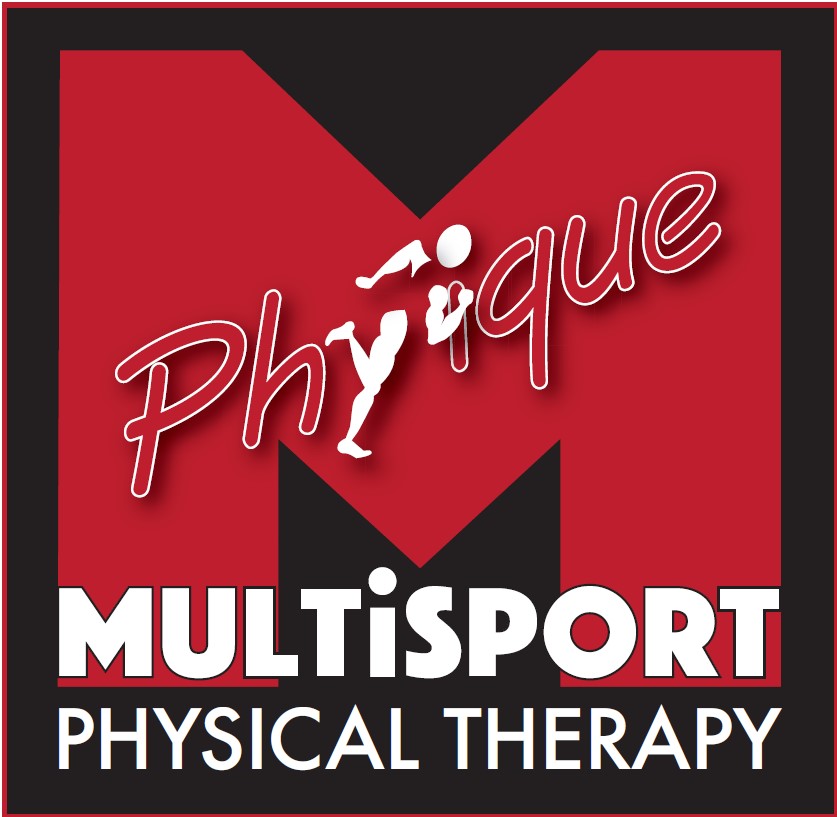Carl Johnson
I recently got to talk triathlon with TCSD member Carl Johnson. Carl has always led an active lifestyle and he just wrapped up another stellar performance representing the TCSD in the USA Triathlon National Challenge Competition. I know you’ll enjoy getting to know this guy who really puts in the miles.

Craig: What sports did you do while growing up?
Carl: First, Craig, thanks for all your fine TCSD interviews and for including me. Organized sports growing up were non-existent for me, only sandlot activities with the neighborhood kids. I am a native of San Diego and grew up a long time ago in what is now Rancho San Diego/Spring Valley area. At that time, it was very rural with old Avocado groves, ranching, and open land. I was in the first class to go to Casa de Oro Elementary School, Spring Valley Junior High, and Mt. Miguel High School. Later I went to San Diego State University. At this time there was huge growth in the San Diego area, a result of the Baby Boomers from the war years - what were all those parents thinking? In school, I was one of those non aggressive, skinny kids who was picked next to last for the P.E. teams. Away from school I was always active, hiking, climbing trees, neighborhood pickup games, riding my bike, and generally running around. Growing up, our family chose to not have a television. For entertainment, my parents always said, "go outside and run around the house". I got my first "full sized" bike when I was in 5th grade. My dad paid $5 for it. He installed a 2 speed rear wheel gear on it. It had a 4" inch high gear shift lever mounted on the top tube. It was a real "nut cracker". It's a miracle I was able to produce any children later in life. The bike was unique at the time because I could power up hills that my friends on single speed bikes struggled to peddle up. My favorite ride, even then, were around and on the local hills and the Alpine Loop.
Craig: What activities led you into triathlon?
Carl: In high school I was part of a very active, yet independent, Explorer Boy Scout group. We hiked and backpacked frequently. That continued into Boy Scouts with my son. As a way to make hiking/backpacking more enjoyable and less fatiguing, I started doing a little distance running. My first race was a 10K run over the Coronado Bridge in1983. It was a proud accomplishment to only stop and walk one time as surely I thought very few "regular" people ever ran the whole way. Over time, I have run a few hundred 10Ks, half, and full marathons all over the country, many of them as a member of the San Diego Track Club. Think of all those entry fees! My times were always pretty much mid pack, I only broke 40 minutes in a 10k a few times. I may not be that fast, but what I do have going for me is that I am a very determined, goal oriented person. In the mid 1990's, for no reason at all, other than, "I wonder if I could do that" I bought a book about triathlon racing.
Craig: What was your first triathlon like?
Craig: In 1997 I did my first San Diego International Triathlon. In that first race, I thought it was necessary to swim in a bathing suit and then change into bike shorts, as surely, no one would bike in wet shorts! I had a long T1 as I struggled to change clothes under a towel. I could see no one else was doing that, so I made that my first and last time. It was a nice accomplishment to know I could train for and do a triathlon. However, my main interest remained hiking, backpacking, and mountain climbing done mainly with the Sierra Club and friends. I could see that doing triathlons was an excellent way to do cross training and hike and run better. Unlike many people, I would not say I was "hooked" on triathlons. It just seemed like a good thing to do to balance out my life.
Craig: What Ironman races have you done and what were those experiences like?
Carl: I have only completed 2 full ironman distance races plus one DNS (did not start) and one DNF. I have completed more than a dozen half marathon distance triathlons. Triathlons races, 70.3, especially as an older person, are a little more of reasonable distance. My first, ironman distance triathlon was the inaugural year - 2004 - CaliforniaMan race at Lake Folsom (near Sacramento). For that race I used Craig Zelent's CaliforniaMan training plan. It was quite an accomplishment for me, especially with some special circumstances. The second half of the run was a struggle, but I was bound and determined to finish, even if it was a very slow walk. I am proud to say I still hold the age group, 60+, course record for this triathlon. Of course there were only a total of 3 in my age group and the next year the race course venue moved to Davis, CA. As an extra highlight, this is the only race my wife has seen me actually race in. I couldn't and wouldn't do it without her support. In 2012, I completed, the last year in Penticton, Ironman Canada. This was especially nice, doing it with my daughter, Tami Threet. The DNF was at Ironman Arizona when a guy mowed/crashed me down at a bike aid station, I was only able to struggle through about 2 miles of the run, this was a first and a huge disappointment. My DNS, was the inaugural of the 2000 full Ironman Oceanside. I was busy training away, when I discovered I had a recurrence of Non Hodgkin's Lymphoma cancer, the same cancer I thought I had "beaten" 16 years earlier. I had a biopsy and began chemotherapy again. A full Ironman Oceanside was not in the cards for me. On a positive note, the advancement in chemo drugs from 16 years earlier made the 2nd time around some easier. A good Oncologist was also helpful.
Craig: I understand you have battled and overcome cancer on 2 occasions. What kinds of cancer did you have and what were the most important factors enabling you to survive?
Carl: For those who have experienced cancer and treatment, you know how much it sucks ! My first encounter with Non Hodgkin's Lymphoma was 1985 at age 41. The chemotherapy was highly aggressive and toxic. Included in the treatment were two hospital sessions in which I was taken close to death before the antidote was delivered at a precise time, which brought me back to the living. Rather on the brutal side! If it were not for my wife, Nancy, to look after my best interests, no way could I have made it. There were times when, all I could do was to force myself to walk around one block. Doctors agreed that my being in excellent shape going into the treatment, was a lifesaver for my survival. With my 1998 cancer recurrence, Lymphoma procedures and treatment had vastly improved. After my first treatment and as a reward to myself, I bought a good mountain bike and rode it up Cowles Mt. However, treatment was still no picnic. To this day, when I see my oncologist, he always says, "well, I don't have any patients that went through what you did back in 1985 and are still around".
Craig: Before you became a triathlete, you were a Sierra Club Outing Leader. Where did that take you and what were some of your favorite expeditions?
Carl: Partly because of my love of the outdoors and sharing it with others, I became an Outings Leader for the Sierra Club, officially starting in about 1987 until 2005. I organized and led over 200 hikes, runs, backpacks, car camps, and canoe trips, mainly in western United States and northern Mexico. In addition, I did a lot of trail running with the outdoor book author Jerry Schad. My reputation was for going to unique places and doing demanding outings. Some of my favorite outings were: runs up and down El Cajon Mt. and Otay Mt. , back pack/climbs of the highest mountain in Baja California - Picacho del Diablo 13 times, about 20 trips, with my wife assisting, to the Copper Canyon in northern Mexico, car camps to the Rancho Meling, every local waterfall, hiking the length of the San Diego River at semi flood stage, and about 10 canoe trips down the lower Colorado River, including many of those trips with high school students who had never camped before. I taught mainly high school art primarily in the San Diego City Schools, so the students were from my classes.
Craig: Rumor has that you had a legal incident at the Grand Canyon. What happened and have you paid your debt to society?
Carl: To say the least, in the fall of 1994 I had an especially interesting experience at the Grand Canyon National Park. I had run/hiked with friends across the canyon, North rim to South Rim several times through the years. In 1994, the guy I had last run across the canyon with, could not do it, so I thought I would gather friends for an adventure. Soon the word got out (as in previous years) about the run. This run is only about the length of a marathon with a little bit of elevation gain and loss. The fall is a beautiful time to do this spectacular run. Soon, I had a small group of runners, mainly friends, SDTC members, and a couple persons who contacted me with their interest. This was a run just for fun, beauty, and friends. Unbeknownst to me, a couple of the "new friends" running with us were part of one of the most elaborate undercover, sting operations in Grand Canyon's N.P. history and they were targeting me! They even distributed "wanted posters" to the other rangers. To make a long story short, on the morning of the run, there were 2 rangers, freezing their butts off, waiting for me, hiding in the bushes down the trail about 500 yards with guns drawn. They arrested me, held me in handcuffs for several hours, prepared to transport me to jail on the south rim, and fined me $2,500. Then somewhat mysteriously, they turned me loose to get to the other side of the canyon just after 12:00 noon. Not having planned on this part of the adventure, I did not have proper nutrition. That was of no concern to the Rangers. I did make it across, but because of nerves, exhaustion, and lack of nutrition, this was probably the closest I have ever come to not finishing a run/hike. It was near dark when I finally reached the lodge on the south side. How ironic it would have been had I needed to be rescued! The charge was basically for "organizing a sporting event" in a National Park. The bottom line was that the Grand Canyon N.P. and the new superintendent happened to be changing their policies in the fall of 1994 because they were tired of rescuing "out of shape" people. Rather than fight the charges in a Flagstaff court, me and another person just paid the fine and moved on. This whole incident left a very negative memory for my wife and I of such a beautiful place.
Craig: You've run a lot of the big city marathons over the years - New York, Los Angeles, Boston. What did you do to qualify for the 2000 Boston Marathon?
Carl: In 1996 I qualified and ran the Boston Marathon. In 2008, I thought it would be great to run Boston again, but with my daughter Tami. In my "qualifying " race , at Long Beach, I got severe leg cramps and missed qualifying by about 5 minutes. What's a person to do? Qualify at another race, of course. It was getting late in the season with no more "local" marathons taking place. My solution was to make an official marathon course and race - the Otay Lakes Marathon. I was very careful to be sure the race course and race was an officially sanctioned USATF course and race. The race was marked, had timers, and aid stations. The Boston race officials were very impressed with my qualifying efforts. Several other people were going to run with me, but eventually, it was just down to one person - me. I qualified for Boston with about 5 minutes to spare and with no race officials hiding in the bushes. It was a thrill to do the first of one of many big races with Tami.
Craig: Over the years, how many bikes do you think you have purchased from Walmart?
Carl: I have only had a few really nice bikes in my life. My "race" bike is a Kestrel (my fifth). It started out as a KM-40 many years ago, but thanks to Kestrel's great warranty policy, it has been upgraded each time the frame had a problem. Many of my other bikes, more than 30, have been cheapo "Walmart type" bikes, costing around $75 and used temporarily. Nancy and I have been on more than 85 cruise ships as that is Nancy's preferred method of travel. I go to the nearest Walmart type store before boarding a ship to purchase the bike. Usually, the bike can be stored under the bed. Our trips have taken us to interesting places around the world. When a person is in a city for a limited time, having a bike allows one to get around into neighborhoods, the countryside, see the sights, and often interact with local folks. One of many good experiences was riding around in a small town on the Amazon River. Two middle school aged boys, on their bikes, saw me and insisted on showing me the sights around their town and out into the jungle. After riding for a couple of hours, they took me to their home for agua dulce (fresh water) and to meet their mom. After using my "new" bikes, I can easily find someone such as a ship crew member, a local person, or a school to give the bike to. Someone else can then enjoy and experience riding a bike.
Craig: What is the National Challenge Competition?
Carl: The USAT NCC is a great activity which began 10 years ago. This is just like doing triathlons, you don't have to been a swimming/biking/track star in college, anyone can do it, you just sign up, and away you go, you what you can do. TCSD has usually put together one or two teams (depending on the official rules) each year, making it very easy to participate. By being part of the TCSD team, it helps a person stay a shape during the three winter months of December, January, and February. In addition, one can see how you compare to other people across the nation. The emphasis, but not exclusively, is to do as much of everything as you can. December is swim month, January is bike month, and February is run month. I find myself looking forward to this time each year.
Craig: How have you done in this competition over the years and what extreme things would we see you do if we spied on you from December through February?
Carl: I have done this competition off and on for several years. Every year, it seems I do a little more. Just like in completing a full Ironman, it does not seem possible that a person could do these activities every day for 3 months. I am retired from regular outside work (so I have a little more time), I don't do fast times anymore, and it sure helps if you don't get sick. In addition, if you can just do at least a little bit every day (or maybe 5 or 6 times a day), it adds up, becomes a habit, and becomes easier. Last year, with the TCSD team, I was up near the top mileage each month, but it seemed like someone would out sprint me in the last couple days of the month’s competition. In the national competition, I was also fighting it out for the overall top position.
Unfortunately, after the competition closed, nationally, 2 people had been saving (not logging in) their miles and went flying ahead like they had been in a separate race. By the way, that's why participants should log in each day. This year, after a TCSD 4th place swim start, I was able to just keep going, 1st place TCSD and nationally on the bike, and an okay run month. I was able to swim and bike every day, and except for 6 days run every day. It adds up. I put in at least 5 to 8 hours of exercise every day for 3 months. Thankfully, my wife was supportive of my time in the pool or on the road. Nationally this year it looks like I will have the most miles, male for the bike and overall most miles, male and female - 5,561.8 unadjusted, actual miles for 3 months.
It's been fun. When you see the results for all of the TCSD members who were part of this competition, they did unbelievably well. I encourage anyone to sign up next year. Go TCSD!
Craig: What are your favorite benefits of being a TCSD member?
Carl: I especially like the races and programs that TCSD offer its members. Also, being able to associate with so many other fine athletes and TCSD members is a treat and honor. It is motivating to talk to others and hear their joys, sorrows, and victories.
Craig: You have been very active in the art community over the years. What have been some of the highlights of your art career?
Carl: For over 30 years, I was an art teacher in the San Diego City Schools teaching mainly at the junior high and high school level. I was especially fortunate that I was also able to pursue being a professional artist/sculptor, exhibiting and sharing my work with others all over the country. One fun highlight very early in my art career, was a gallery in Los Angeles calling to say one of my sculptures had just been sold to John Denver. For many years I was involved in local art organizations having been president of Allied Craftsmen of San Diego and the San Diego Museum, Art Artist Guild of San Diego. It should not go unsaid, that the financial aspects of selling my art work, allowed us a more comfortable lifestyle in which to raise my family than just on a teacher's salary alone would have, for which the whole family is grateful. Since my art studio was at home, I was able to be around during the child rearing years of the family. Both of my kids grew seeing art constantly which I believe, accounts for the creative people they are today.
Craig: Who would you like to thank for where you are at today with your life?
Carl: This is a good life. I could not have done all these great adventures without the freedom my parents gave me growing up to explore my surroundings. Too, the support of my family, especially my wife Nancy and son Doug (lives in Japan) and daughter Tami.
Craig: What are your future goals in triathlon?
Carl: I want to continue to be active and enjoy life every day with a smile on my face. Triathlons? Maybe Ironman Japan or Roth or Ironman Hawaii with Tami - or TCSD Fiesta Island for sure. At this point in life, I don't make too many extra long range plans, but live in the moment, and feel very thankful for each day. Life is good!
Craig: Carl, thank you so much for sharing your story. The TCSD is lucky to have you as a member. You are a great role model for all of us. I hope you can continue putting in the miles for many years to come. Craig Zelent is a USA Triathlon Level 1 Certified Coach. Craig can be reached at 760-214-0055 or tricraigz@yahoo.com.








